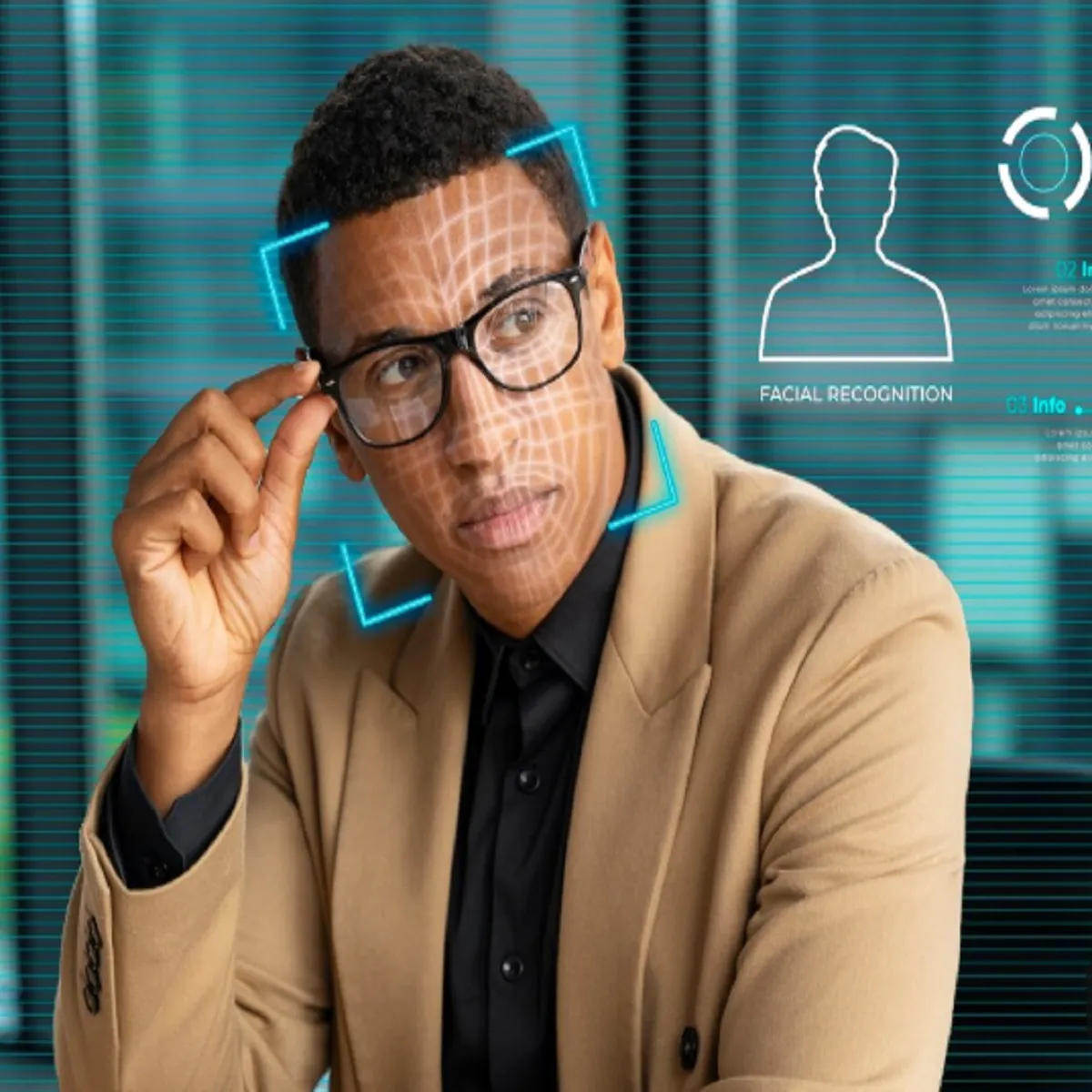How Does AI Detection Work? Algorithms That Separate Human and AI Text
What is AI Detection?
AI detection refers to the process of identifying whether a piece of text was generated by an artificial intelligence system or written by a human. As AI technology continues to evolve, distinguishing between AI-generated content and human-written text becomes increasingly important. This detection is crucial in various fields, including academia, content creation, and cybersecurity, where authenticity and originality are highly valued.
Why is Detecting AI-Generated Content Important?
Detecting AI-generated content is essential for ensuring the integrity of written material. In educational and professional settings, AI-generated text could be misused for plagiarism, cheating, or misleading information. In the world of journalism and publishing, distinguishing between AI and human-written content helps maintain trust and accuracy.
AI-Generated vs. Human-Generated Text
AI-generated text typically follows patterns that differ from human-written content. While AI systems can produce coherent and contextually relevant sentences, they may lack the nuanced thought processes, emotional depth, and originality that a human author brings to their writing. AI texts often have a mechanical feel, as they may not fully grasp the subtleties of language or tone.
How Accurate is AI Detection?
The accuracy of AI detection tools depends on various factors, including the sophistication of the AI used to generate the text and the method used to analyse it. Modern AI systems can generate highly convincing content that may challenge detection algorithms. However, newer detection tools are becoming more effective by constantly improving their ability to recognize subtle differences between AI-generated and human-written text
How Does AI Detection Work?
AI detection is the process of identifying whether text was generated by a machine or written by a human. As AI technology improves, so does its ability to produce highly sophisticated content. To accurately detect AI-generated text, detection tools focus on several key elements that differentiate machine-produced writing from human-written material.
The Role of AI in Content Generation
AI plays a major role in content generation, especially with the rise of language models like GPT-3, which can produce text that closely mimics human writing. These AI models are trained on vast amounts of data, which helps them generate responses to prompts with coherent and contextually relevant sentences. They can be used in a variety of applications, from automated writing to chatbots and content creation.
Key Features of AI-Generated Text
AI-generated text often contains distinctive features that make it detectable. One of the most common indicators is the repetitive or formulaic sentence structure. AI tends to follow specific patterns, such as overusing certain phrases or constructs, leading to a more mechanical feel. Additionally, while the text may be grammatically correct, AI writing sometimes lacks true nuance or subtlety.
Basic Principles of AI Detection Algorithms
AI detection algorithms typically rely on machine learning techniques to analyse writing. These tools focus on key linguistic features, such as syntax, sentence length, and word choice, comparing them against known datasets of AI and human text. By identifying patterns and anomalies in the text, detection algorithms can predict the likelihood that a piece of writing was generated by an AI system.
What are Common AI Detection Techniques?
AI detection encompasses a range of techniques designed to distinguish between text generated by artificial intelligence and that written by humans. As AI technology becomes more advanced, these detection methods have evolved to address the unique challenges posed by machine-generated content. The primary goal is to accurately identify subtle differences in writing patterns, structure, and style. To achieve this, AI detection systems employ a variety of approaches, including linguistic analysis, pattern recognition, and comparisons with traditional plagiarism detection systems.
Linguistic Analysis and Statistical Patterns
Linguistic analysis involves examining the structure, syntax, and grammar of the text. AI-generated content tends to follow certain patterns in language usage, such as repetitive sentence structures or unnatural transitions between ideas. For instance, AI may produce text that lacks subtlety in phrasing or has a mechanical tone, which is often detectable through linguistic analysis.
Pattern Recognition and Natural Language Processing (NLP)
Pattern recognition in AI detection relies on algorithms that identify specific characteristics unique to machine-generated content. Natural Language Processing (NLP) is a branch of AI that allows detection systems to understand and interpret the nuances of language. In AI detection, NLP algorithms analyse the context, tone, and style of writing
Comparison with Traditional Plagiarism Detection Methods
Traditional plagiarism detection tools focus on matching content with known sources to identify copied material. However, AI-generated text is typically original and doesn't copy from existing sources, making traditional methods less effective. In contrast, AI detection techniques don’t just look for direct matches but analyse the writing style, structure, and language patterns.
What are Algorithms that Separate Human and AI Text?
Algorithms designed to separate human and AI text use advanced techniques to analyse writing patterns and identify key characteristics that distinguish machine-generated content from human-written text. These algorithms often rely on machine learning models, neural networks, and stylometric analysis to detect subtle differences in how AI and humans construct sentences, use vocabulary, and express ideas.
Machine Learning-Based Approaches
Machine learning algorithms are at the core of many AI detection systems. These algorithms are trained on vast datasets containing both human-written and AI-generated text, allowing them to learn patterns and differences between the two. By analysing various features such as sentence structure, word choice, and grammar, machine learning models can predict the likelihood that a piece of text was written by an AI.
Neural Network Models
Neural network models, such as GPT-2 and GPT-3, have revolutionized AI text generation. These models are trained to understand and generate human-like text, making detection more challenging. However, specialized algorithms can be used to detect the unique signatures left behind by these models. For example, certain patterns in sentence formation, word distribution, and contextual understanding can signal that the text was generated by a neural network.
Stylometric Analysis
Stylometric analysis focuses on identifying the unique writing style of an author. By analysing features like sentence length, punctuation usage, and even the frequency of specific words, stylometric algorithms can create a "profile" of an individual's writing style. When applied to AI detection, these algorithms compare the style of the text in question to known human writing profiles.
What are the Challenges in AI Detection?
AI detection is a constantly evolving field, and while advancements have been made, there are still several challenges that detection systems face. From the rapid progress of AI text generation to limitations in current detection tools, these hurdles impact the reliability and effectiveness of AI detection. Let’s explore some of the key challenges in more detail.
Evolving Nature of AI Text Generation
One of the primary challenges in AI detection is the rapidly advancing capabilities of AI text generation models. As AI systems, such as GPT-4, continue to improve, they generate text that is increasingly sophisticated, nuanced, and human-like. These advancements make it harder for detection algorithms to accurately distinguish between AI-generated content and human-written text.
The Limitations of Current Detection Tools
Current AI detection tools have limitations that affect their accuracy. While some tools are trained to spot specific patterns or signatures of AI-generated content, these patterns can sometimes be subtle or difficult to detect. Additionally, AI detection tools are often limited by the quality of the training data they use. If a detection system hasn’t been trained on a large and diverse dataset, it may struggle to accurately identify AI text, particularly if the AI model has been trained on different data.
The Balance between False Positives and False Negatives
Another significant challenge is the balance between false positives (incorrectly identifying human text as AI-generated) and false negatives (failing to detect AI-generated text). Both types of errors can undermine the reliability of detection tools. False positives can lead to innocent human authors being wrongly flagged, while false negatives allow AI-generated content to go undetected, leading to potential misuse.
What are Popular AI Detection Tools?
In the rapidly advancing field of AI, there are several popular tools designed to detect whether content is generated by a machine or a human. These tools use various techniques, such as linguistic analysis, machine learning models, and pattern recognition, to help identify AI-generated text. Understanding how these tools work and their effectiveness can help in choosing the right solution for different needs.
Overview of Tools
Some of the most well-known AI detection tools include OpenAI's AI Text Classifier and GPTZero. OpenAI's AI Text Classifier is a tool designed specifically to analyse text and determine whether it was generated by an AI model like GPT. It uses a combination of machine learning algorithms and a large database of AI-generated texts to spot patterns that are characteristic of machine-written content. GPTZero.
How these Tools Work and their Accuracy
These AI detection tools operate by analysing key features of the text, including word choice, sentence length, and writing style. They are trained on massive datasets that include both human and AI-generated texts, enabling them to recognize patterns and anomalies that distinguish one from the other. While these tools can be highly accurate in identifying AI-generated content, their effectiveness can vary based on factors like the sophistication of the AI model and the context in which the text is used.
Pros and Cons of Using Detection Tools
The main advantage of AI detection tools is their ability to identify AI-generated content, helping ensure authenticity and originality in various fields like education, journalism, and content creation. However, there are some drawbacks. These tools may sometimes produce false positives, flagging human-written text as AI-generated.
What is the Future of AI Detection?
As AI technology continues to evolve, so too will the methods and tools used to detect AI-generated content. The future of AI detection holds exciting possibilities as researchers and developers work to stay ahead of the rapidly advancing AI landscape. Let’s explore some upcoming trends, how AI detection will evolve, and the ethical implications of these advancements.
Upcoming Trends in AI Detection Technology
One of the key trends in AI detection is the integration of more advanced machine learning algorithms that can better identify even the most sophisticated AI-generated text. These algorithms will likely become more adaptive, learning from a broader range of AI models and styles to improve their detection capabilities. Additionally, AI detection tools may start incorporating real-time analysis, providing instant feedback on whether a piece of content is machine-generated.
How AI Detection will Evolve with Advancements in AI Generation
As AI generation models like GPT-4 and beyond continue to improve, detection tools will need to evolve to keep up. Future AI detection systems may rely on more nuanced methods, such as multi-layered deep learning techniques or advanced natural language processing (NLP) algorithms. These systems could analyse not only the text itself but also metadata, context, and the broader writing patterns of an author.
The Ethical Implications of AI Detection
The growing use of AI detection raises significant ethical questions. While AI detection tools are essential for ensuring transparency and integrity in content creation, they also raise concerns about privacy and false accusations. For example, AI detection systems could potentially flag human-written content as AI-generated, leading to false negatives. Additionally, there is the issue of surveillance—using these tools on personal or private content might infringe on individuals’ privacy rights. Balancing the benefits of accurate detection with the ethical concerns of overreach will be crucial as AI detection technology continues to develop.
Conclusion
AI detection plays a crucial role across academic, professional, and creative contexts by ensuring content integrity and authenticity. In education, it helps maintain academic honesty, while in professional settings, it safeguards intellectual property. For creative industries, it ensures the originality of content and combats plagiarism. To stay informed and use detection tools effectively, it is important to regularly update your knowledge on advancements in AI and detection technologies. Understanding how does AI detection work allows users to make informed decisions about which tools to use, ensuring a balance between innovation and ethical considerations in content creation?









